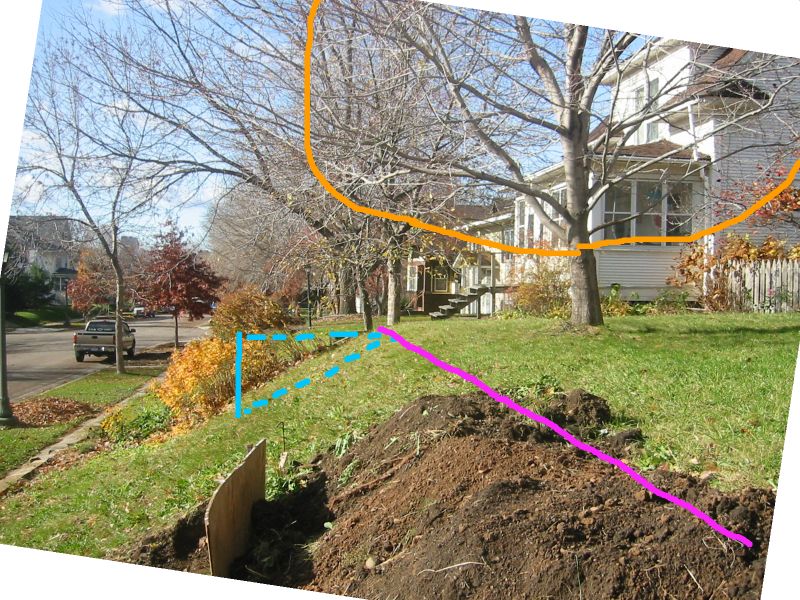We're like to put up a retaining wall in our front yard. We have a 20' Maple tree growing on the top part of our yard. The canopy's edge overhangs the steep, eroding hill that we want to put the retaining wall on.
If we put the retaining wall there, we'll end up covering about 20% of the root zone, and about 15% of the dripline area with soild. The coverage would go from nothing (closer to the tree) to about 2' (towards the wall).
From what I've read online, the general rule is that, at least with Maples, 'coving part of the roots may cause damage'...ie, nothing too specific.
We're in a bit of a bind, as we can either cover the roots and take the risk, or leave the hill, which will just continue to erode away towards the tree.
So, my question, are we risking the tree too much by covering that portion of the roots?
If we put the retaining wall there, we'll end up covering about 20% of the root zone, and about 15% of the dripline area with soild. The coverage would go from nothing (closer to the tree) to about 2' (towards the wall).
From what I've read online, the general rule is that, at least with Maples, 'coving part of the roots may cause damage'...ie, nothing too specific.
We're in a bit of a bind, as we can either cover the roots and take the risk, or leave the hill, which will just continue to erode away towards the tree.
So, my question, are we risking the tree too much by covering that portion of the roots?





